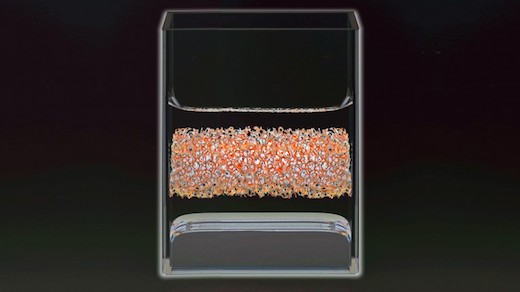
The more widespread adoption of renewable sources of energy is at least in part hampered by our poor ability to store energy. But a team of MIT researchers has recently a made a breakthrough in developing a new battery system. This all-liquid battery system is more efficient at storing energy, and costs less to produce, than currently available solutions. The further development of this system and use could make solar and wind energy more attractive and therefore facilitate its wide scale adoption.
The batteries in this all-liquid system are composed of several layers of molten material, each of which has a different density. This enables the layers to separate naturally, similarly to the way oil and water do. Magnesium is used for one electrode, and antimony for another, while molten salt serves as the electrolyte. In order to operate, the entire system needs to be heated to 700° C (1292° F). However, the MIT researchers have discovered that substituting some of these materials, namely using one electrode made from lithium and another from a combination of lead and antimony, reduces the necessary operating temperature to 450-500° C (842-932° F).
The most surprising breakthrough was the discovery of the benefits that come from antimony and lead being mixed together to create the electrode. Contrary to their assumptions prior to conducting the experiment, the melting point of the combined materials lay in between that of the individual materials, while the hybrid metal retained the higher voltage of the antimony, meaning that there was no decline in voltage of the end product.
Due to the lower operating temperature of the battery, it will have a longer life span and it will also be easier to design and manufacture, while costing less. According to the team’s findings, this battery should maintain around 85 percent of its initial efficiency even after 10 years of daily charging and discharging.
Going forward, the research team will continue to explore the effects of other metals on their new battery system with the hope of further reducing the operating temperature and cost, while improving performance.
Related Articles on JetsonGreen.com:
Researchers Develop Semi-Transparent and Decorative Solar Cells
Researchers Develop Self-Healing Solar Cells
More Environmentally Friendly Solar Cells

Leave a Reply
You must be logged in to post a comment.